
As Australia heads to the polls, experienced journalist and UQ alum Madonna King will be talking to UQ experts to get their informed perspectives on the issues that matter to voters.
This page will be updated regularly throughout the election campaign, so check back for the latest information and bookmark for easy access.
Latest stories
- What does the election result mean for Australia?
- 2022 election campaign: serious politics or bad reality TV?
- What’s the purpose of superannuation?
- Where will the ‘frustrated’ vote land?
- Could cost of living cost votes?
- Fishing for votes – Labor launches its campaign
- Climate, society and finances: understanding the
youth vote - In the balance
- Who might make the best leader? The devil you know or the devil you don't?
- How much are candidates spending on social media?
- The election campaign begins
- About Madonna King
What does the election result mean for Australia?
The ALP will rightly bask in this election victory. As the party’s Sydney MP Tanya Plibersek put it Saturday night: a win is a win is a win.
But beyond that it has more than the usual challenges of government.
Rebuilding the budget and managing a volatile international situation will be tough, as will be delivering the core promises of action on climate, integrity and reconciliation.
But the real challenge will be in how to govern. The combination of a slim expected majority in the House of Representatives and a low primary vote (support for the major parties has never dropped this low at a federal level) will see the government’s legitimacy under challenge every day.
And that will come from an Opposition that we can expect to be muscular in campaigning from day one, in a bid to regain the Treasury benches.
There are many lessons in the nation’s 47th federal election, but chief among them will be the public’s mood for a different style of governing.
Implicit in Saturday’s result is a repudiation of the “strongman” style of Scott Morrison and a craving for a style of government that gives more sway to other opinions.
The style of government that may suit these times has changed in response to our changed emotional needs.
We are more attuned to a government that curates different approaches and is less wedded to a single ideological position. This is the teal appeal. Less shouting, less sloganeering and more negotiation to fix a problem rather than just to have a win.
UQ Professor of Politics and Public Policy Katharine Gelber says Saturday night’s result illustrated a fundamental shift away from the big party system, where the preferences of progressive third parties became crucial.
The make-up of the new Parliament means climate change will climb up the agenda. So will the promised – and long overdue – integrity commission. Issues crucial to women, which have long been ignored, were also prioritised by those independents who have now written themselves into the history books.
“We have to take preferences really, really seriously and not think of this as a two-horse race,’’ Professor Gelber says.
“What happened last night is not a once-off; it’s a consolidation of a trend away from large parties that is global and long lasting.’’
We shouldn’t be surprised by that – or the push to make politics more attuned to how we live our daily lives.
In the workplace, the boss has to be more considerate of the views of their staff. In the marketplace, the vendor has to be more considerate of the views of the consumer. And in our homes, we have to be more considerate of the views of the rest of our families.
Politics should be no different. And this is the disruption brought home by this election.
If new Prime Minister Anthony Albanese can understand and harness this, he has a chance of success (which is winning a second term). If his rival on the Opposition benches understands and harnesses this better than him, then his time in government will be short.
This, on one level, is a feminisation of politics, and we can expect a change in tone. But that’s far too simplistic – even if it does draw from the attributes women better bring to political life than men.
In truth, it’s just a modernisation of politics which, as evidenced by one-third of voters eschewing the major parties, surely needs it.
Scott Morrison is a relic from that past. Anthony Albanese has the chance not to be if he chooses – and his party lets him.
Watch this space.
Photos: Anthony Albanese claims victory to become Australia's 31st Prime Minister (Photo by James D. Morgan/Getty Images).
Scott Morrison concedes defeat following the results of the Federal Election (Photo by Asanka Ratnayake/Getty Images).

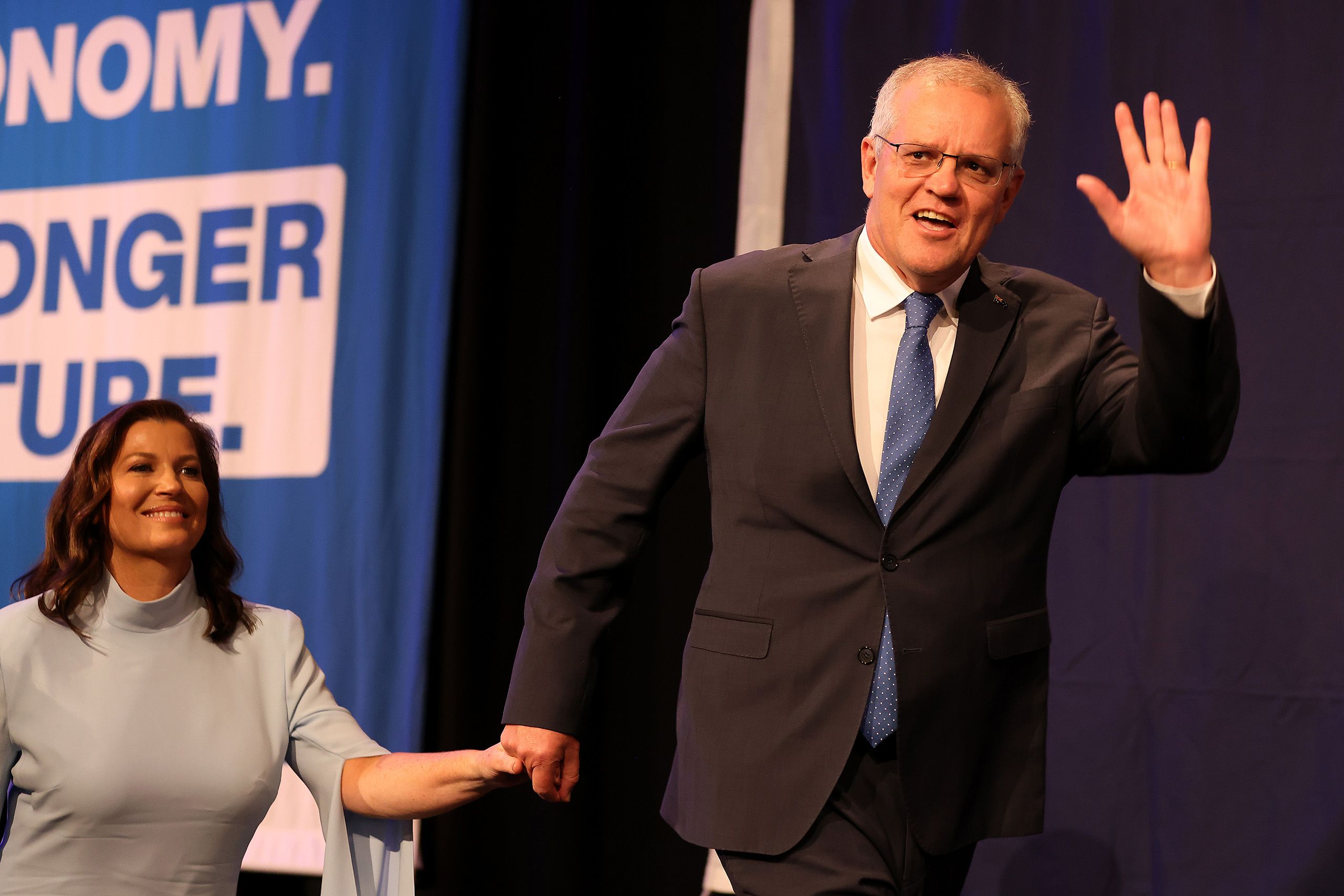
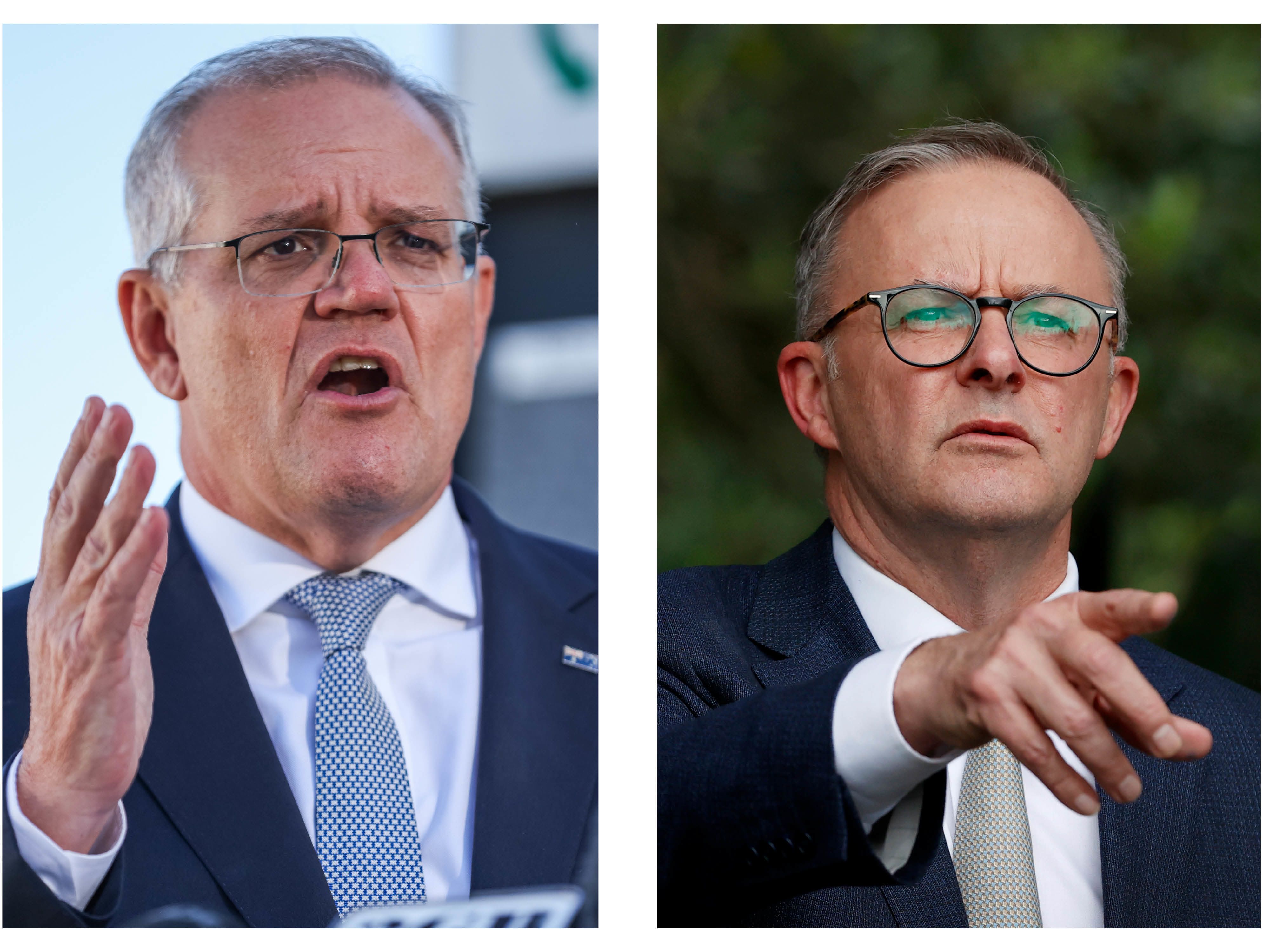
Left: Prime Minister Scott Morrison (Photo by Asanka Ratnayake/Getty Images). Right: Opposition leader Anthony Albanese (Photo by Lisa Maree Williams/Getty Images).
Left: Prime Minister Scott Morrison (Photo by Asanka Ratnayake/Getty Images). Right: Opposition leader Anthony Albanese (Photo by Lisa Maree Williams/Getty Images).
2022 election campaign: serious politics or bad reality TV?
As the credits roll on the nation’s 47th election, the reviews are already describing Election Campaign 2022 as a lacklustre reality TV show that didn’t quite meet viewers’ expectations.
Indeed, by the time the six-week series ends, more than six million viewers will have already lodged their judgement, and signed off; many of them fed up with forgotten lines and cheap shots and shallow policy plots.
But what will be remembered are the few storylines and character plays that made this a campaign to study into the future.
The use of the American political playbook, in advertising and language and leadership, will top that talk.
The rise of the teal independents, and how they fare on Saturday night, will also be a crucial factor – or at least should be – as both main parties navigate a policy future.
And the frustrating lack of discussion and vision around big policy areas like health and education will surely be the mark of ongoing voter reviews.
UQ Professor of Politics and Public Policy Katharine Gelber nominates the stand-out feature as the way smaller, emerging parties tried “to adopt a playbook from the US”.
Examples are plentiful: cartoon-like video explainers, deliberate misinformation, promises that could not be carried out constitutionally, and even an increasing American-style focus on leadership.
UQ lecturer in the School of Economics Dr Vera te Velde raised the same trend as colouring Election Campaign 2022. She sees the rise in identity-based politics having been aggravated by two factors: a pandemic which divided society and the wide-spread use of social media.
“Social media is exacerbating some of these identity issues because it becomes a platform where people can express their preferences,’’ Dr Vera te Velde says.
UQ political scientist Dr Frank Mols says even the theme of “freedom’’, used by the United Australia Party was an “American-type rip-off’’.
Just a thought – but perhaps Clive Palmer’s big spending also falls into that category. The fruits of his $85 million spree will soon become clear: can his United Australia Party win a presence in Parliament after spending almost double the main parties?
Dr Mols says making policy on the run, which meant it might never be implemented, appeared to be something “endemic in the Australian system’’. It’s something that has also coloured this election campaign.
The appeal of the teal independents will be the first thing Dr Mols monitors on election night. And while polling points to success for this new political brand – particularly in Melbourne – increased competition for that vote meant nothing was guaranteed.

Member for Warringah Zali Steggall is one of the candidates running as a "teal independent".
Member for Warringah Zali Steggall is one of the candidates running as a "teal independent".
UQ social scientist Professor Paul Henman says the teal independents have challenged the Coalition, which had failed to respond.
Both parties had also failed to ignite serious discussion in the policy space. Anthony Albanese played a small target, particularly after early gaffes over the cash and unemployment rates, Professor Henman says. And Scott Morrison adopted different approaches in a bid to capitalise on voters’ concerns.
For example, the Liberal leader helped promote the transgender moral panic of one candidate, before dropping it. He admitted he needed to be less of a ‘bulldozer’ in his approach – and then summarily dismissed concerns of eminent jurists over the proposed integrity commission.
Director of research in the UQ School of Economics Professor Brenda Gannon says evidence-based policy always provided the best results. And this campaign was marred by both a lack of broad discussion and the involvement of experts.
She’s right. Where has there been any genuine discussion of big ideas around heath and education and ageing, for example?
While the problems with aged care had been raised, the focus on fixing them has been isolated, and didn’t address the system as a whole.
“It’s not just about money,’’ Professor Gannon says. Strategy was also crucial so that the changes could be delivered.
With still a few hours to go, the reviews are more two-star than five-star, meaning Election Campaign 2022 is more Survivor than Australia’s Got Talent.
What’s the purpose of superannuation?
That question is at the heart of the politics that will dominate the start of this final week of campaigning.
Is the sole purpose to provide higher standards of living in retirement? Or should it be able to be accessed, along the way, to help through tough times?
Scott Morrison’s risky campaign launch pitch argues the latter, and he’s hoping it wins over first home buyers and counters some of the impact of an official rise in interest rates, which helped turn around Anthony Albanese’s fortunes
So what did he announce? If – and based on both internal party polling and external polling, that’s a big if – the Coalition is first across the line on Saturday, first home buyers will be able to invest up to 40 per cent of their super or $50,000 – whichever is lower. It would later be returned to their super, on the sale of the property.
Those accessing the scheme must live in the home for at least 12 months, and the scheme would come into operation in July next year.
That’s at the front end of the market, and sits with broadening another policy, which will now allow those aged 55 and over to contribute up to $300,000 to their super when they are downsizing from their family home.
The downsized initiative extends the number of people who can sell the family home and use part of its proceeds to increase their superannuation income. It will appeal to many – but perhaps not those who want to keep their eligibility for the pension and its healthcare benefits.
The plan to help first home buyers into the market is a more controversial move. For example, while $50,000 sounds good, the maximum amount a homebuyer can draw is 40 per cent of their super balance. So they would have to have $125,000 in super to access $50,000 – a figure that on average most Australians don’t reach until their mid-40s.
The requirement to put it back into super on the sale of the first home also sounds good but some experts believe that would impede equity when the person is trading up.
The super sector already has raised problems with it – because it wants the money to stay in its domain, even though there is evidence from the retirement incomes review that the greater impost on retirees is the need to pay rent.
The important question is whether $50,000 does more to contribute to retirement wealth in super than it does in the family home – and that depends on timing and location.
Every election brings lessons, and a lesson from the 2019 ballot was surely that tinkering with the income of rich retirees (e.g. scrapping cash refunds for franking credits associated with the dividend imputation scheme) did a lot of damage to Labor because it created fear of precedent that everyone would be disadvantaged.
This doesn’t do that. Scott Morrison can position himself as a friend of the retiree; he’s offering to turn a voter’s bricks and mortar into higher retirement income. And this comes on top of his generous offer to extend pharmaceutical benefits to more retirees.
Labor was quick to deride the first home buyer plan, arguing it would not help those in need and would further drive up prices. “This would be like adding kerosene to a fire,’’ Labor campaign spokesman Jason Clare said.
UQ political scientist Dr Adam Hannah believes it is difficult to argue with Labor’s analysis and the strategy looked a bit like a “Hail Mary’’ pass.
“I don’t think it achieves much in terms of the problems in the housing market, and it could undermine the method of retirement savings we have,’’ he says.
It would also benefit those who are already earning higher incomes.
Scott Morrison, less than a week out from polling day, will be hoping voters come to another verdict.
Photo: Prime Minister Scott Morrison speaks to the audience at the Liberal Party election campaign launch on May 15, 2022 in Brisbane. (Asanka Ratnayake / Stringer / Getty Images)
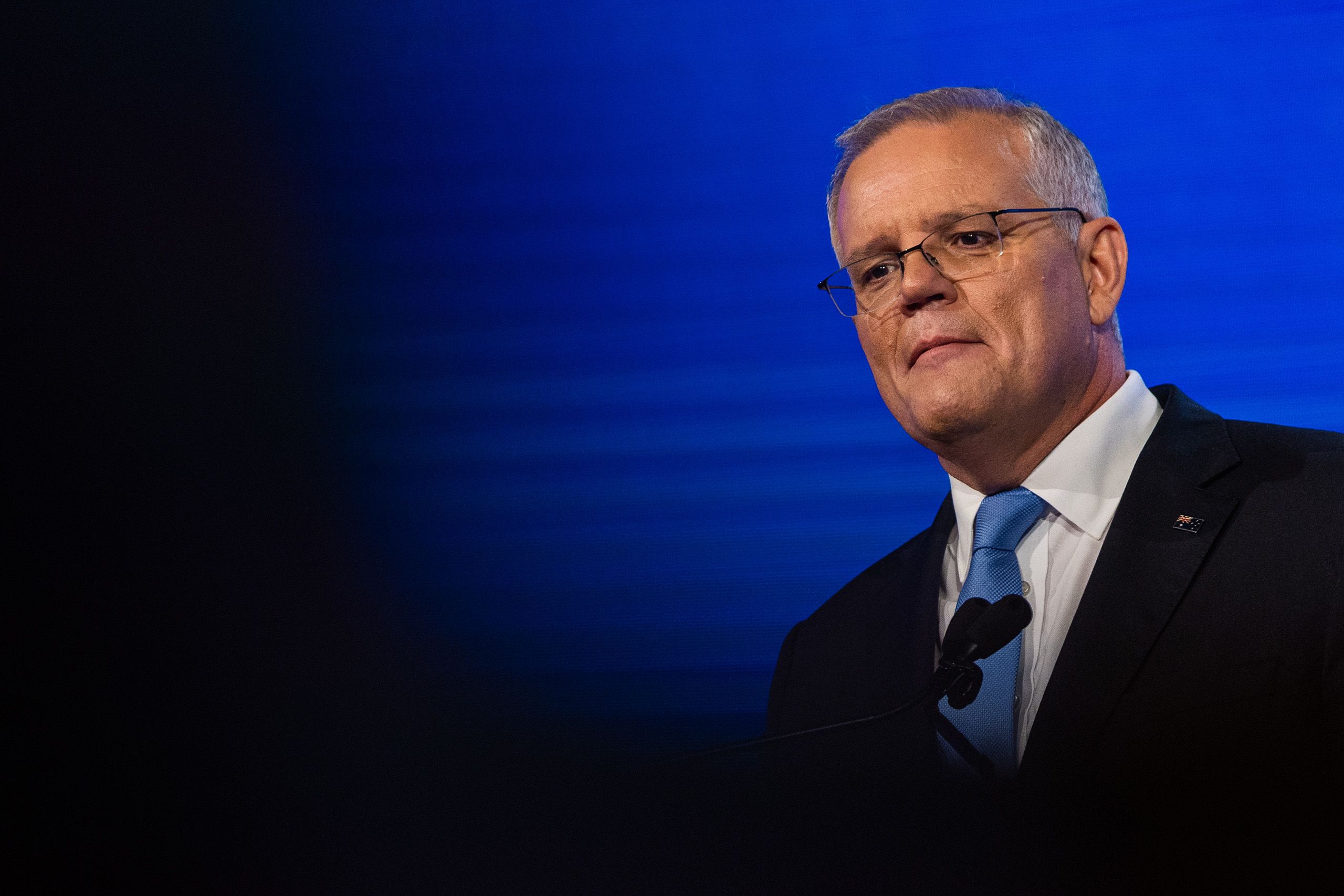
Where will the ‘frustrated’ vote land?

Opposition leader Anthony Albanese and Prime Minister Scott Morrison face off at the second leaders' debate of the 2022 federal election campaign. (Photo by Alex Ellinghausen - Pool / Getty Images)
Opposition leader Anthony Albanese and Prime Minister Scott Morrison face off at the second leaders' debate of the 2022 federal election campaign. (Photo by Alex Ellinghausen - Pool / Getty Images)
Followers of British history, or The Crown on Netflix, will know Michael Fagan; the unemployed man who broke - not once, but twice, into the Queen’s apartment in 1982.
While his ingenuity can be admired, perhaps, The Crown portrays Fagan as a crestfallen and jobless painter struggling as unemployment turned up and the economy turned down.
It also showed the immeasurable chasm between the lives of ordinary people, and those seeking their vote, to govern on their behalf.
Margaret Thatcher, at least in the televised version, meets the Queen later in a multi-million pound palace sitting room to discuss the British triumph in the Falklands War, which encouraged a surge in popularity for the prime minister.
“If unemployment is temporarily high, Ma’am, then it is a necessary side effect of the medicine we are administering to the British economy,’’ Mrs Thatcher tells the Queen.
People vote for all sorts of reasons – from leadership to a single local issue – but on polling day, most undecided voters will choose the political or party that best serves them, their family and their beliefs.
This campaign has shone a spotlight on the high number of undecided voters, peaking at more than one-in-four, and at the level of individual ‘frustration’ being felt; and while it might not mirror that felt by Fagan in 1982, it’s just as real.
If the polls are right and Scott Morrison loses, the annals of history will probably target rising interest rates as the killer punch; the straw that broke the camel’s back.
It comes on top of cost-of-living increases, lacklustre leadership and a COVID legacy that fans out much wider than our health system.
And the Liberals’ explanation that raising interest rates will moderate strong growth sounds as empty as Thatcher’s unemployment rate rationale.
So where will that ‘frustrated’ vote land? Will it swing back to the government which has based its campaign around economic management and social security? To the devil we know. Or to the one we don’t: Anthony Albanese’s Labor Party, which has had years in opposition pondering how it might government differently?
Or will it travel outside the two main parties, boosting teal independents and smaller parties from the Greens to One Nation and the United Australia Party?
UQ political scientist Dr Frank Mols says that as the poll nears, the margin will narrow and some undecided voters will move back to the main parties, including the ‘devil’ they know. “It’s not that they’ve become more trusting – it’s driven by negative partisan identity,’’ he says. That means they see it as preferable to vote for one party, to shut the other out.
In Victoria and NSW, some undecided voters will land on teal independents and in Queensland, where they are not represented strongly, the Greens and other moderates might become the beneficiary.
So why should Scott Morrison hold the Liberals’ campaign launch in Queensland? Dr Mols’s answer suggests Scott Morrison might be facing a challenge on two fronts: teal candidates interstate, but in Queensland, the right fringe of the Liberal Party could move away from the government.
And that meant the horde of seats won last time in Queensland needed to be protected.
UQ political scientist Dr Glenn Kefford says that’s important in the context of a broader picture which could see the Liberals realise losses in WA and northern Tasmania, for example.
Like Dr Mols, he says the swag of undecided voters will diminish as many move back or decide to give the alternative big party a chance at government.
But a second phenomenon was in operation too. “In political science terms we refer to it as dealignment.’’ Here, voters sever the tie with one of the major parties. No longer “committed partisans’’, they see value in lodging their vote elsewhere.
This was also supported in academic literature, he said, as over time both the vote for minor parties and independents has climbed and the strength of voters’ ties with the major parties weakened.
That makes for a fascinating final 10-day countdown. On face value, the polls all suggest a change of government. But that big swag of undecided voters will determine its make-up, and that might change a dozen times before polling day.
Could cost of living cost votes?
If Scott Morrison fancies himself as a marketer, this is the time to prove it.
An interest rate rise, as people gear up to vote whether to keep his government or not, needs a message that he can sell to voters.
And in theory, it might even be there: the economy is strong, inflation is high, and the first tiny interest rise in a decade is simply needed to iron out a few extremes.
Indeed, it would be a winning marketing campaign to also argue that his government’s stewardship of the economy has helped deliver those long-term low interest rates. But so far, that message is not being crafted, not being heard – or simply not being believed.
There are many measures of economic performance and wellbeing (unemployment rate, inflation, current account deficit, and GDP growth among them, even if the numbers are forgotten) but none have the emotional power of official interest rates rising.
And the emotional drivers are what matters in an election campaign. Cost of living is the issue in 2022, and banks’ decisions to quickly pass on the Reserve Bank’s official rate rise adds to the narrative that life is going to get tougher, sooner.
But what’s particularly tricky here is how it impacts on different cohorts of voters – and that increases the likelihood of 151 different elections on May 21 in 151 different seats.
UQ social scientist Professor Paul Henman says most of us were expecting rates to turn up. “The problem is that we’ve had them for so long, that we’ve designed our futures around them.’’
That doesn’t make the message about a strong economy any easier, because people have committed to plans that they now must meet, with changed variables.
Cost of living increases are also impacting in some areas more than others. Take transport, which has seen price increases of 15.1 per cent. But Professor Henman says that is varied too: Hobart had the highest rate of 19.5 per cent, with Sydney the lowest on 12.7 per cent. In real and very visible terms, this is evident through numbers voters are seeing at the petrol pump as they fill their car each week. And there are three more tankfuls until voting day.
And while rising house prices look like good news for home owners, they are a challenge for those who want to enter the market. In Perth, where the Coalition is in trouble, house prices increased by 18.1 per cent, more than double the national average. But different factors are at play in different cities. Darwin, for instance, had the highest price increases when it came to education.
Outside of an election campaign, perhaps it would be easier to spin what is happening in the economy.
But UQ political scientist Dr Adam Hannah says while rate increases won’t impact immediately, the reporting of this week’s Reserved Bank decision will shape how voters think. “They are not good headlines for a government wanting to be a safe set of hands.’’
That point is spot on, because that’s how the Coalition is painting itself. A safe set of hands. A trusted steward of the economy.
“People don’t experience the macro economy,’’ Dr Hannah says. “They experience their own bank balance and bills.’’
“For any government, when you have an interest rate increase, I don’t think that’s ever going to be positive thing for their prospects.’’
Few would disagree with that comment, particularly anyone who remembers 2007 when Labor last won government in a campaign topped off by an official interest rate rise.
Then the rate rose from 6.5 per cent to 6.75 per cent. But a rate rise is a rate rise – costly to voters as well as those who want their votes.
Photo: Pedestrians walk past the Reserve Bank of Australia headquarters in Sydney.
(Mark Metcalfe/Stringer/Getty Images)

Fishing for votes – Labor launches its campaign
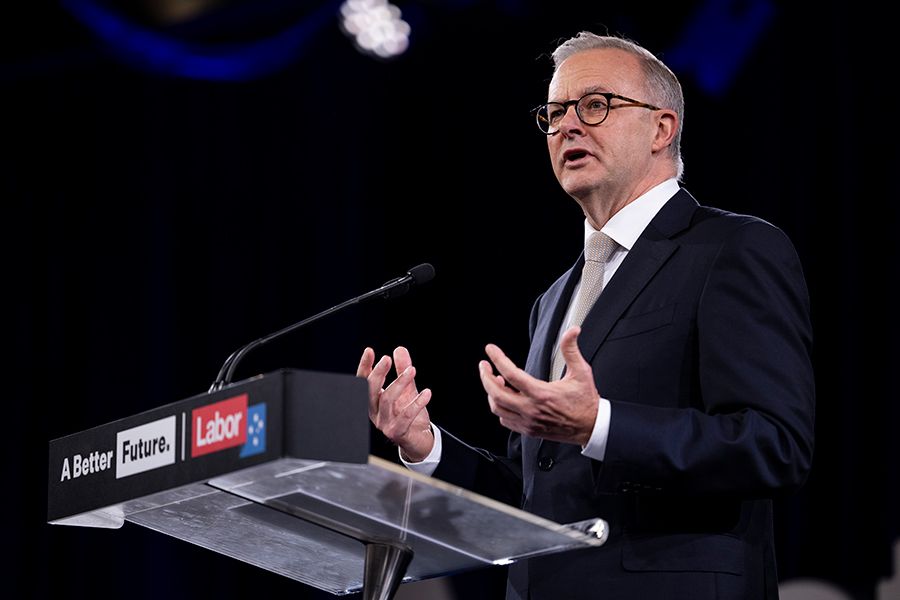
Federal Opposition leader Anthony Albanese speaks during the Labor Party election campaign launch at Optus Stadium in Perth. (Image: Matt Jelonek/Getty Images)
Federal Opposition leader Anthony Albanese speaks during the Labor Party election campaign launch at Optus Stadium in Perth. (Image: Matt Jelonek/Getty Images)
If you’re a surfer, you go surfing where the big waves break. If you’re a shopper, you go shopping where the bargains are plentiful. And if you’re a fisher, you go cast your line where the big fish bite.
And that’s what Anthony Albanese did this weekend on his COVID comeback with his metaphorical fishing expedition to Western Australia.
Albanese, an aspiring prime minister, is a politician fishing for votes and he chose Perth to officially launch his campaign (which has actually been running for two years) because it’s in the state where Labor hopes it can gain three of the seven seats it needs to win to take government on May 21.
Albanese cast his net wide, not only flattering West Australians with his attention but baiting his line with the vote-winning issues that appeal to his heartland: relief from barriers to housing through a publicly funded housing subsidy and similar support for those who need it to pay for medicines, child care and transport.
Add in to that an undertaking to reduce the gender pay gap with particular focus on the caring professions dominated by females and you have a package that pays credit to the cost-of-living issues that will become more dominant as this campaign progresses, most likely in the shadow of a rise in official interest rates either this week or next month.
And, of course, there’s the opportunity to appear progressive – in Labor’s case through a program to electrify more cars, support minerals industries that will feature in new technology and to make progress on reconciliation.
Campaign launches truly are a wonderful moment in the sunshine for political leaders. They get to preach to the converted and are surrounded by their parties’ past heroes.
Albanese had both former Labor prime ministers Kevin Rudd and Paul Keating, just as Scott Morrison will have John Howard, maybe Tony Abbott but certainly not Malcolm Turnbull.
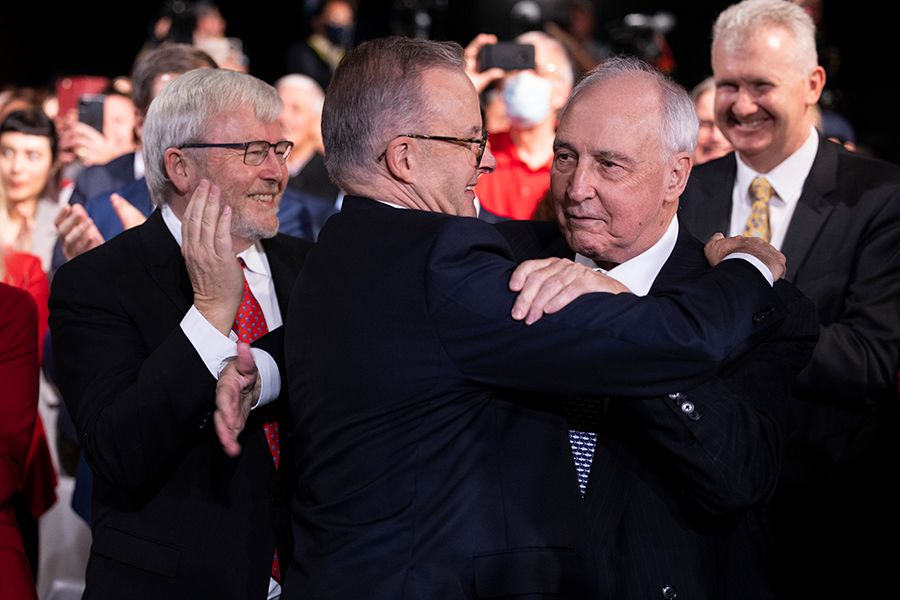
Former Australian Prime Minister Paul Keating greets Federal Opposition leader Anthony Albanese during the Labor Party election campaign launch, as Kevin Rudd looks on. (Image: Matt Jelonek/Getty Images)
Former Australian Prime Minister Paul Keating greets Federal Opposition leader Anthony Albanese during the Labor Party election campaign launch, as Kevin Rudd looks on. (Image: Matt Jelonek/Getty Images)
While they guarantee a chance to sell a pure message, carefully workshopped and rehearsed, the target audience isn’t the swinging voters but the party faithful who react to the call to arms with the intensifying of political activity you will see over the next three weeks.
And, by going to WA, Albanese hasn’t just set out to put a marker on a few seats but has aligned himself with the popular Mark McGowan, who is Labor’s rockstar leader of the moment.
McGowan, a UQ graduate who forged his professional and political career in Perth, can barely do a thing wrong in WA – and is the only state ally Labor has so far put alongside Albanese. To labour the fishing analogy, he’s the burley bringing the prey to the bait.
Now we’re three weeks out, we are starting to see some policies that will guide our decision making. Inevitably, there will be argument about the directions of those policies, the cost of them and scare campaigns from either side about the unknown consequences.
As much as we’d all like the closing weeks of an election campaign to be about policy and about the future of the nation, it’s inevitable that it will stray to the personal and negative. We saw some of this with Albanese yesterday who contrasted the known elements of his team with the government - the “inexplicable’’ Barnaby Joyce, the “unspeakable’ – Alan Tudge and the “unthinkable’’ Peter Dutton.
This will light up the Labor base and encourage it to go out and get the extra votes (and seats) it needs to form majority government.
The latest polls show each side still has a battle to get there. It’s still far too early to fire up the barbie.
Climate, society and finances: understanding the youth vote
Almost one million extra Australians have become eligible to vote since the last federal poll.
And that’s a significant variable in this poll that all parties, so far, appear to be ignoring.
Almost 90 percent of 18–24 year old Australians are registered to vote; about 80,000 rushed to register in the week after the election was called.
These are engaged voters, not all enraged, but determined to have their representative say at the ballot box.
They are knowledgeable and politically aware, and their influence reaches beyond their own vote to influence others, according to social researcher Mark McCrindle.
“About seven in 10 parents say their children have influenced their purchase and habits around environmental issues, for example,’’ he says.
That’s a factor more powerful now than it has ever been. “There are issues that they own more than the older generation – and the environment is one of those. Diversity is another. Global connectivity is a factor too.’’
While the pandemic and social change, in terms of diversity and gender, are dominant issues, the environment and climate change dominate many of their policy positions, he says.
But here’s where it becomes tricky. This generation – Generation Z – were born between 2002 and 2004, and few will remember Kevin07, who came into power as they shared sandpits in pre-school.
The world has changed remarkably since then. Social media has helped forge that, giving voice to views and discussions that are always represented publicly.
That means other issues, not being canvassed, are running strongly in online discussions, and escaping the public electoral narrative.
UQ political scientist Dr Frank Mols says housing affordability has also become an important consideration for this generation. So too, has the ‘right to repair’ – a social movement based around reform of consumer and environmental laws to ensure consumers have the right to fix goods rather than replace them.
“The current generation of politicians are not all aware of that,’’ Dr Mols says.
Young people have their own version of populism, too, that isn’t summed up by particular candidates or issues being discussed.
One example was the influence of conservative Canadian psychologist and cultural warrior Jordan Peterson, who has support amongst some young voters, particularly male.
Their discussions and influence were almost wholly happening outside traditional media, but Dr Mols says it was being “vigorously shared amongst’’ those groups.
Mark McCrindle agrees. “When there is a strong trend in one way, you’ll get a corrective trend in another,’’ he says.
The “general traditional view” that young people were more left-leaning also didn’t wash, he says. It wasn’t uniform. Socially-progressive, many were economically-conservative. “Gen Z know they have to pay their way at university, they know they need a job that pays well to one day own a house.’’
That meant issues like tax had become an important consideration for many youth.
Add the mental health challenges delivered by a pandemic, the transgender discussions in our schools and universities, and a determination to make a difference in their own world, and our politicians and election policies are looking slightly Kevin07.
Photo: Voters head to the polls in Bondi Beach in the electorate of Wentworth on election day on September 7, 2013 in Sydney, Australia. (Marianna Massey/Getty Images)
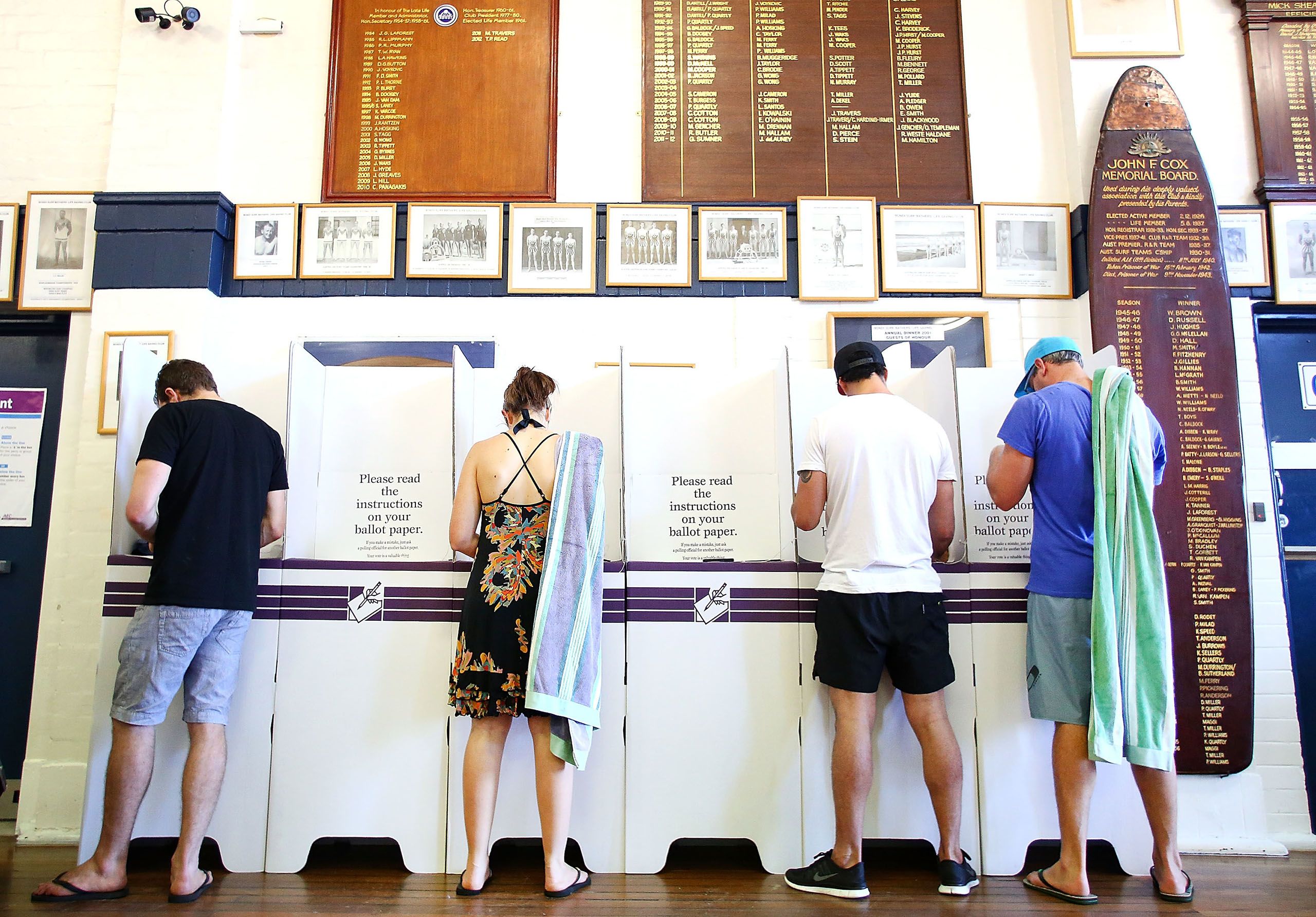
In the balance
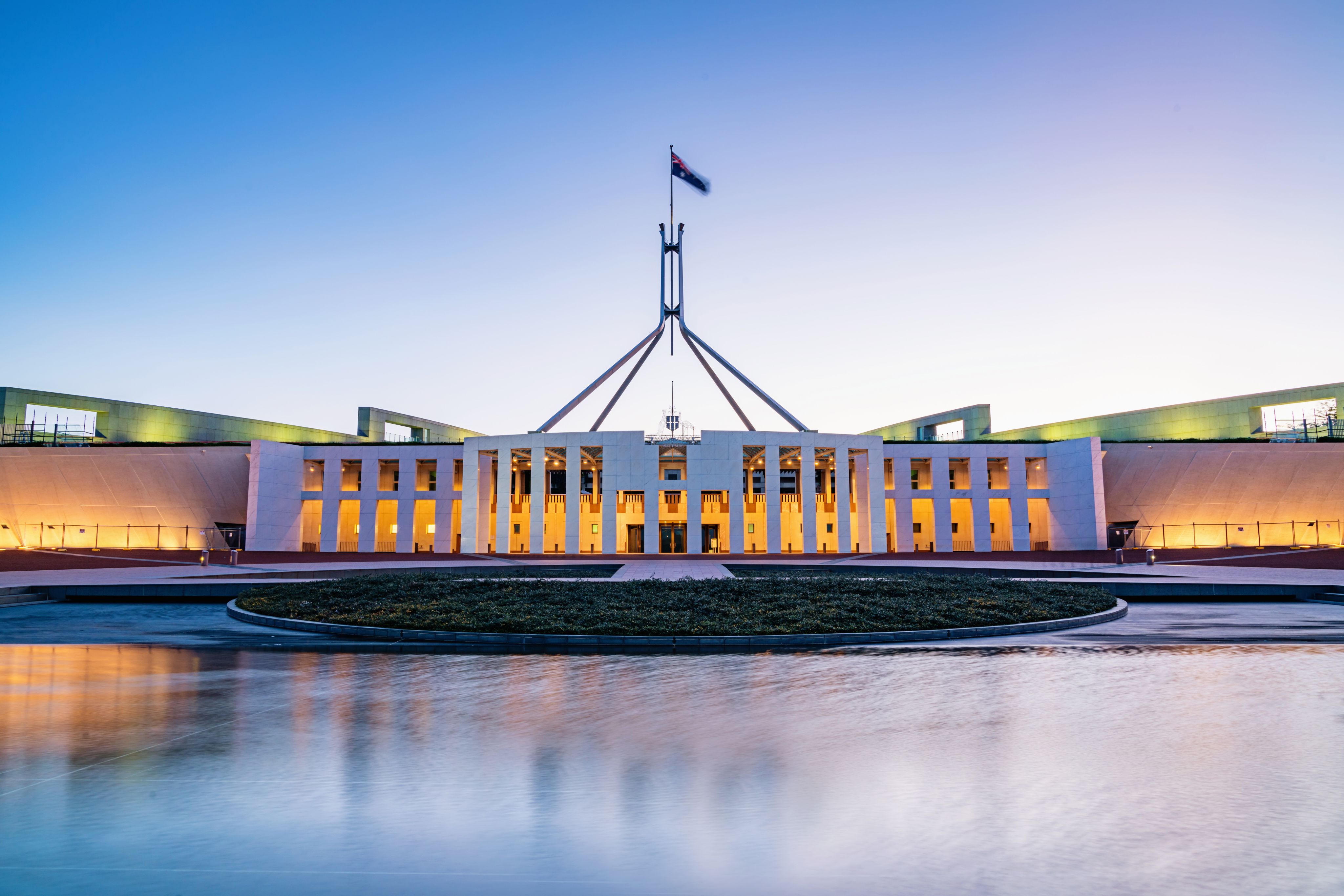
A hung parliament could see Independent MPs play an important role in deciding the balance of power in the Australian parliament. (Image: Mlenny/Getty Images)
A hung parliament could see Independent MPs play an important role in deciding the balance of power in the Australian parliament. (Image: Mlenny/Getty Images)
Be prepared for some serious horse-trading, once night falls on May 21.
All election campaigns bring twists and turns, but at this point – with more than one-in-four voters undecided – a hung Australian Parliament looks like the shortest odds.
That simply means that no party has enough MPs in the House of Representatives to pass laws. The party forming government would need to negotiate successfully with other parties or Independent MPs to form a coalition, or become very adept – as a minority government – at negotiation, to pass its plans.
To the two big parties, that’s chaos – and that’s why both Scott Morrison and Anthony Albanese have this week ruled out doing a deal with independents to form government.
At least until election day.
“A vote for independents ... is about uncertainty and instability in incredibly uncertain times," Mr Morrison says. “It's the Forrest Gump principle: you just never know what you're going to get.”
Anthony Albanese, likewise, isn’t interested in talking to those who might further wreck his chance of taking the big job. “There will be no deal with the independents and crossbenchers,” he says.
But would a hung parliament be the ogre they are painting?
No, says UQ political scientist Dr Glenn Kefford. Indeed, it might even enhance democracy.
Dr Kefford has studied the first hung Commonwealth Parliament and minority government for 70 years – and that was in 2010, when both the ALP and Coalition won 72 seats each.
(That meant each side needed an extra four MPs to gain a majority; a feat eventually won by Labor – the Gillard Government – which secured the support of the Australian Greens and three of the four non-aligned independent members).
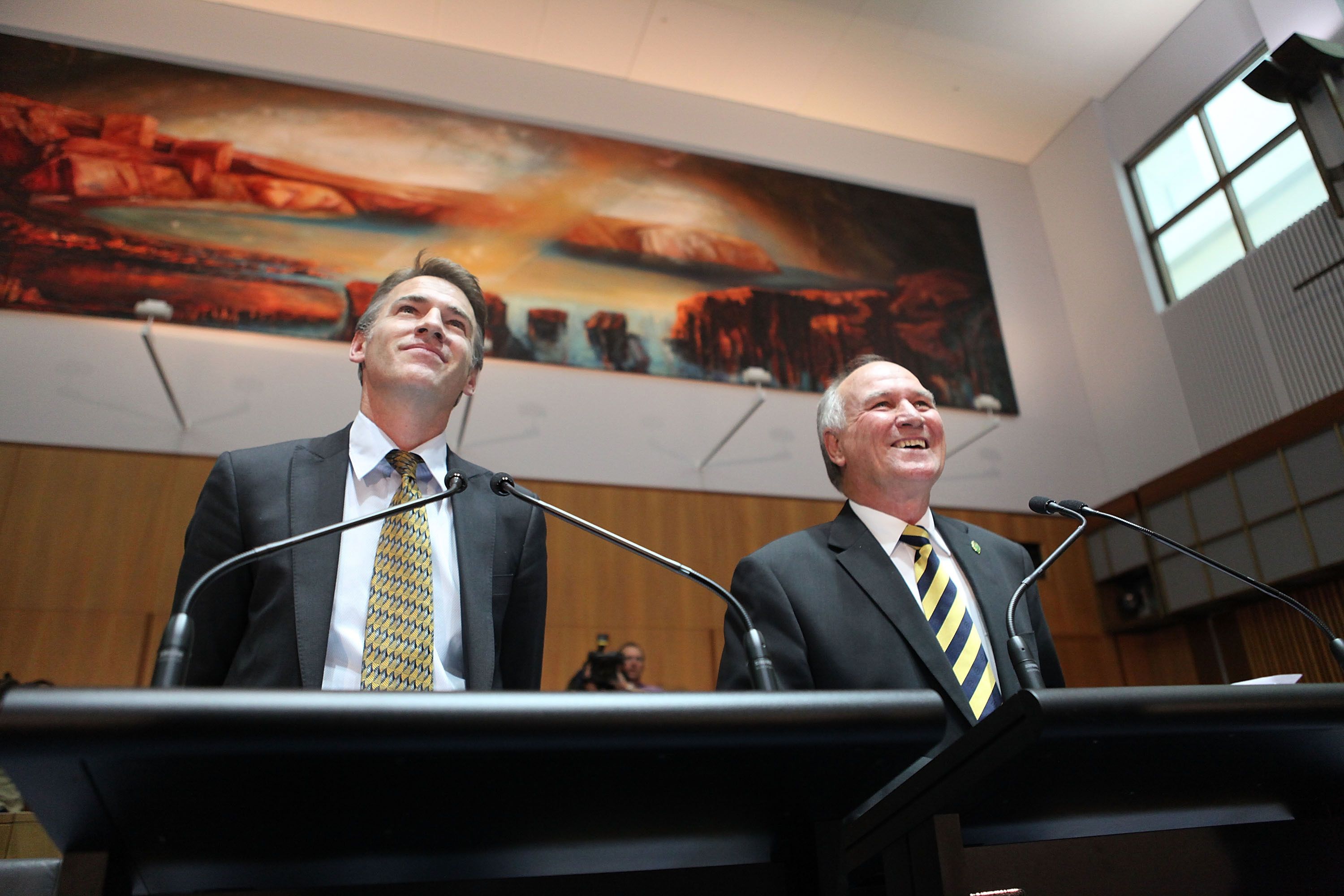
Independent MPs Rob Oakeshott and Tony Windsor announce their support for Julia Gillard on 7 September 2010, securing government for the Labor Party. (Photo by Cole Bennetts/Getty Images)
Independent MPs Rob Oakeshott and Tony Windsor announce their support for Julia Gillard on 7 September 2010, securing government for the Labor Party. (Photo by Cole Bennetts/Getty Images)
Dr Kefford says minor parties and independents can seek to change the culture and inclusivity of Parliament. More Private Members’ Bills, for example, might be introduced. More questions might be asked. And certainly more cooperation, and less confrontation, is likely.
“The perception is that it is chaotic, when the evidence would suggest that’s often not the case.”
Of course, the promises made by the two leaders this week of no deals is code for ‘no deals before the election’. On May 22 – or even in the background before that – strategies will be nutted out to give each side the best chance if they need to fight post-poll for the treasury benches.
But the value of independents and minor parties runs further than the role they might play, if elected. Already, at a local level, they are turning attention to policy and asking both big parties how they would address questions they would rather not answer.
Climate change is an example, with the role played by the well-heeled so-called teal independents who are taking on moderate Liberals in inner-city seats. And on the Labor side, the heat is being applied to candidates in Central and North Queensland over extractive industries.
A frustration with the major parties has also led to a burst of rural independent candidates – including former mayors – putting up their hand. And unlike former elections, where they might have sided with a party, many of these candidates are running on their own.
Add to that the low primary vote being recorded for both parties, and the high numbers of undecided voters, and it is understandable that the threat posed by minor candidates appears to be the only issue on which Scott Morrison and Anthony Albanese agree.
“Normatively, this is good for democracy,’’ Dr Kefford says. And he’s spot on. We are seeing new pathways and new opportunities to police the policies of the major parties - and that’s happening at the national level where the parties are hoping to control the narrative, and at the local level where voters will attend the ballot box.
That doesn’t mean the next parliament will balloon with independent or minor party MPs, and indeed most of their influence will be seen prior to voting day. (Although Pauline Hanson will almost certainly now defeat controversial Queensland Senate candidates including Campbell Newman, to return to the Upper House.)

One Nation leader Senator Pauline Hanson could have an important role to play if the election results in a hung parliament. (Photo by Sam Mooy/Getty Images)
One Nation leader Senator Pauline Hanson could have an important role to play if the election results in a hung parliament. (Photo by Sam Mooy/Getty Images)
But what the increased voice of independent and minor party MPs does mean is that we now have a better chance to ensure policies are debated and discussed as part of the daily campaign diet.
And that has to be a win for all voters.
Who might make the best leader? The devil you know or the devil you don't?
Job description: Prime Minister of Australia
Candidates:
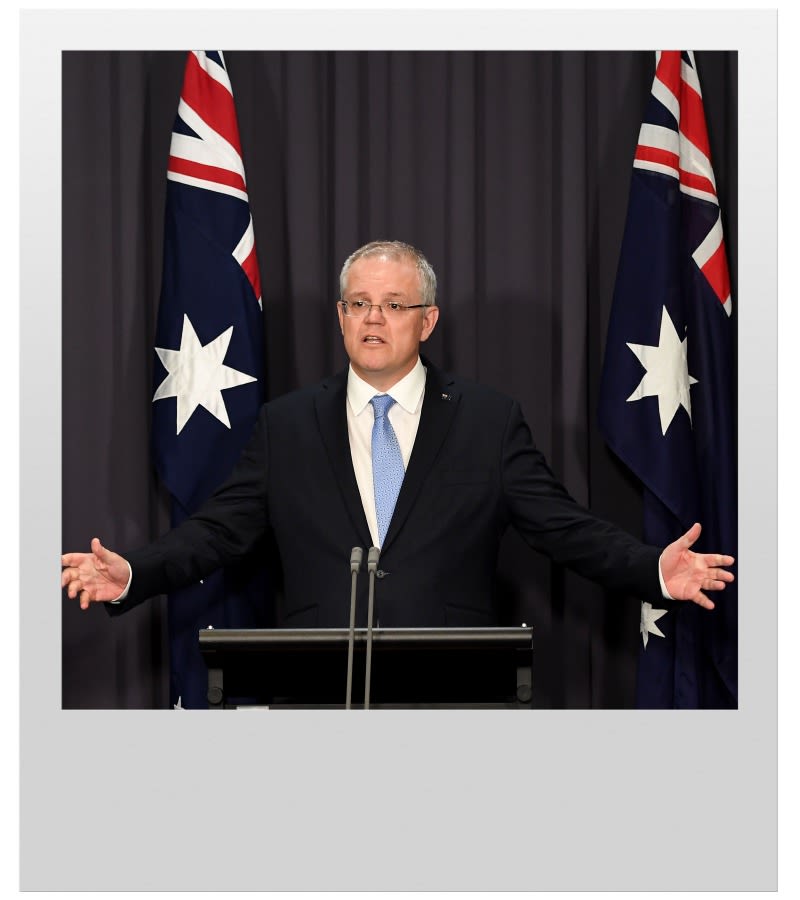
(Photo by Tracey Nearmy/Getty Images)
(Photo by Tracey Nearmy/Getty Images)
Scott John Morrison
Male
53
Lives in Sydney
Studied economics angeography at the University of New South Wales
Long parliamentary career
Job description: Prime Minister of Australia
Candidates:
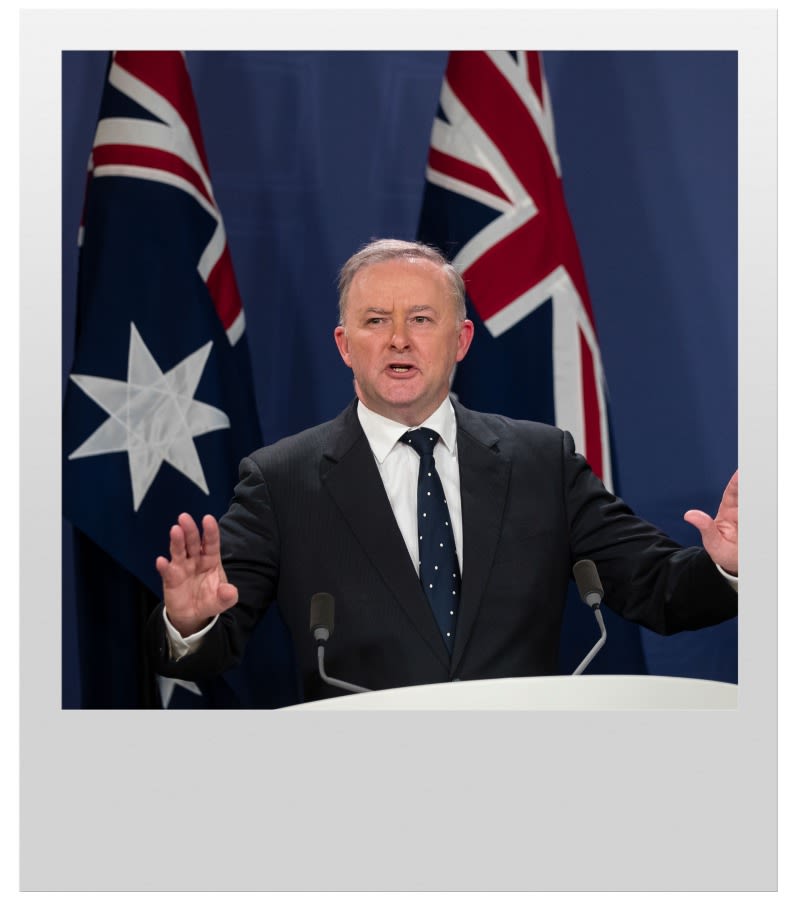
(Photo by Brook Mitchell/Getty Images)
(Photo by Brook Mitchell/Getty Images)
Anthony Norman Albanese
Male
59
Lives in Sydney
Studied economics at the University of Sydney
Long parliamentary career
Job description: Prime Minister of Australia
Candidates:

(Photo by Tracey Nearmy/Getty Images)
(Photo by Tracey Nearmy/Getty Images)
Scott John Morrison
Male
53
Lives in Sydney
Studied economics angeography at the University of New South Wales
Long parliamentary career
Job description: Prime Minister of Australia
Candidates:

(Photo by Brook Mitchell/Getty Images)
(Photo by Brook Mitchell/Getty Images)
Anthony Norman Albanese
Male
59
Lives in Sydney
Studied economics at the University of Sydney
Long parliamentary career
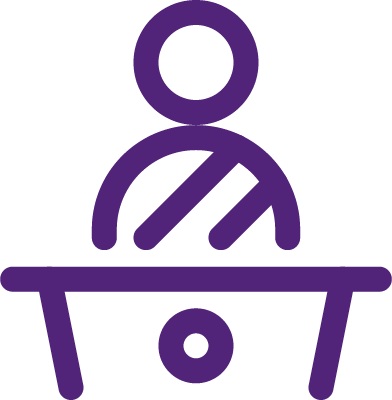
With policy debates taking a backward step early on in this campaign, the focus is squarely on the two men, with as many similarities as differences, vying for the top job.
So how – after all this time – has it come down to a leader many don’t like, and a leader many don’t know?
UQ Psychology Professor Alex Haslam says while some leaders are keen to make a campaign about themselves, “neither Morrison nor Albanese want to make it about themselves – for different reasons.’’
Morrison was challenged by his “capacity to lead’’ over recent difficult times, enveloping floods, fires and an ongoing pandemic. And while he might like to claim credit for the nation’s handling of the pandemic, voters put that squarely down to State leaders.
Albanese was pitching himself as a “working class bloke’’, like the voters he hopes will support him. “But we don’t know him,’’ Professor Haslam says. “We don’t know if he’s one of us.’’
The Labor leader bristles each time he is asked whether voters really know him or his values. He’s had a biography done, he says. And he’s been in the public eye forever.
Despite that, polls are still showing close to 40 percent of voters still don’t have a strong take on who he is, or how he might lead the nation.
That means both candidates, in a presidential-style campaign which has become symptomatic of modern elections, have work to do – and after Anthony Albanese’s opening gaffe about the cash and jobless rates he will be hoping Easter provides a timely circuit breaker.
Other politicians have made similar mistakes – John Hewson couldn’t explain the GST on cake in 1993 and Annastacia Palaszczuk in 2015 ‘passed’ in a radio quiz question about the GST rate – but UQ political scientist Dr Frank Mols says it is how the stumble is handled that determines the likely fallout.
Dr Mols, who specialises in political psychology, says the first time Albanese failed to answer the question about the cash rate, he didn’t engage – and remained in control. He faltered when he tried to answer the second question about the jobless rate – and couldn’t.
But it won’t have the impact it did in 1993, when John Hewson lost the “unlosable election’’. Albanese fans would “gloss over it’’, his detractors would have a field day on social media about it, but the news cycle now meant it would unlikely be fatal.
It’s understandable that many voters see both leadership options for the position of prime minister as wanting, especially at a time when the nation is facing challenges ranging from the legacy left by COVID-19 to our relationship with China.
Would others be better? Josh Frydenberg? Tanya Plibersek? It’s irrelevant because as voters, we don’t get a say. And that means, to many, it is a contest between the devil we know and the devil we don’t.
Rusted-on Liberal voters will always support Morrison. Devoted Labor supporters will see Albanese as deserving the top job. And it will be “those in the middle, who are not following politics as closely’’ who will end up the decision-makers, according to Professor Haslam.
Scott Morrison needs to prove he is better than his opponent. Anthony Albanese needs to look better than the guy who’s got the job he wants.
The problem with that focus on personality is that it ignores policy debate, where a contest of ideas can inspire and drive the plans which should provide a blueprint for a nation looking forward.
How much are candidates spending on social media?
The UQ Election Ad Data Project reveals the social media spending trends of candidates and parties during the 2022 campaign. It was designed by Associate Professor Gianluca Demartini of the School of Information Technology and Electrical Engineering, and Dr Glenn Kefford from the School of Political Science and International Studies.
Note: The dashboard is live, and therefore may take a little time to load.
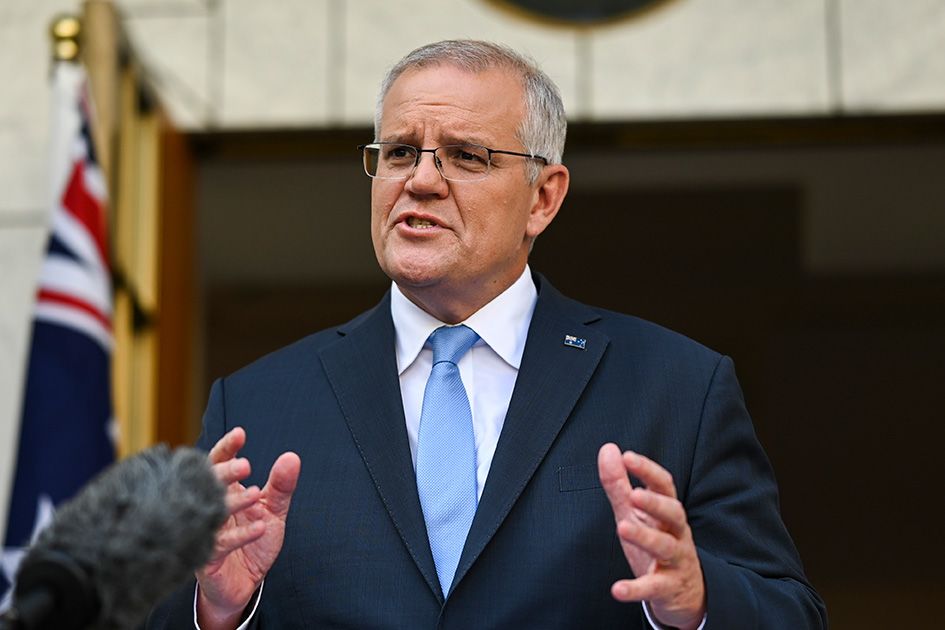
Prime Minister Scott Morrison addresses the media at Parliament House on April 10, 2022 in Canberra, Australia. The Prime Minister visited Governor-General David Hurley to advise him of his plans to call the federal election on 21 May. (Photo by Martin Ollman/Getty Images)
Prime Minister Scott Morrison addresses the media at Parliament House on April 10, 2022 in Canberra, Australia. The Prime Minister visited Governor-General David Hurley to advise him of his plans to call the federal election on 21 May. (Photo by Martin Ollman/Getty Images)
The election campaign begins
Scott Morrison might need some biblical intervention to move mountains on May 21.
This May 21 election may prove to be as much a test of faith as a test of the polling, sloganeering, preference counting and political tactics that will dominate the next five weeks.
At its heart will be a test of the question Scott Morrison posed when he won unexpectedly from Bill Shorten three years ago: Can miracles happen twice? Or can we expect a more earthly phenomenon of lightning that only strikes once in the same place?
Make no mistake. If a win in 2019 was a miracle, then a win in 2022 will be something more than a miracle. Or a testament to the misreading of the electorate by Labor, the pollsters and the line-up of pundits who have written off Scott Morrison.
A win this time around will have Morrison achieving what no Australian Prime Minister has done for almost 20 years: two consecutive elected terms in office. That will be a tough ask, according to UQ’s Professor Graeme Orr, particularly given it comes in the wake of very public challenges like COVID-19, war, fires, floods, and even low wage growth.
If he pulls it off, it may create a period of political stability many Australians crave, one in which we move on from the revolving door style of leadership that has defined Australian democracy since Labor decided it was a good idea to ditch Kevin Rudd before he had a chance to take it to the polls as Prime Minister.
That’s all very well if your idea of stability is a government with Scott Morrison at its head. The authority he applies over his government will only grow to be unchallengeable if he pulls off a victory this time around.
The victory will also, rightly, be attributable to his skill as a campaigner, the acceptance by the population that attributes many of his own people deride – the Dad dagginess, the reliance on slick slogans and the one-man band style of decision-making – is in touch with the attributes the electorate likes.
The numbers don’t favour him, as recent polls attest. But while they all point to a change of government, there is no certainty about the prospects of Anthony Albanese and Labor.
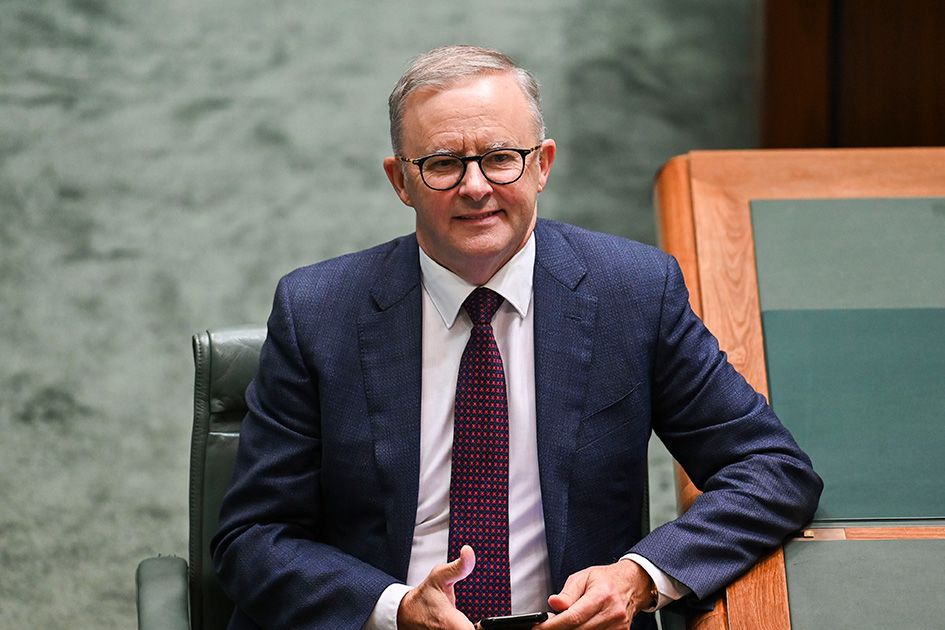
Leader of the Opposition, Anthony Albanese in the House of Representatives chamber at Parliament House on March 29, 2022. (Photo by Martin Ollman/Getty Images)
Leader of the Opposition, Anthony Albanese in the House of Representatives chamber at Parliament House on March 29, 2022. (Photo by Martin Ollman/Getty Images)
The government has worked hard in recent months to turn this campaign into a campaign about security. And that means our personal economic security as interest rates start to rise and our national security as the world shakes from the rise of China and the display of Russian authoritarianism in Europe.
Both attributes are traditionally natural assets for the Coalition, but UQ political scientist Dr Glenn Kefford makes the point that own goals have strongly muted the Government’s message there.
The Coalition has also had to defend itself on a few counts. For one is the question of debt, which has risen beyond any previous levels over a decade of conservative government (and the trend was on before COVID19 started running up the bills). The other is just how much we’ve done to prepare for a shifting defence landscape over the past decade when the Coalition has had control of diplomacy and defence spending.
Just as important is the question of who is Anthony Albanese. Labor has plotted this campaign to overcome its 2019 failing of spelling out too much detail of its intentions. It has tried to make itself a small target, including not really defining Anthony Albanese, who is an inner-Sydney leftie now defining himself as being at the centre of politics.
That leaves the government with ongoing opportunity to colour in an outline of the Labor leader. Don’t expect any crayon to be left in the pencil case as it turns the attention on him.
What won’t help the government, however, is the distrust of Scott Morrison, who we do know a lot about. He has been captured by the best political slogan of the century, the Betoota Advocate’s description of him as “Scotty from Marketing”. (Sorry marketing friends, but this makes him seem like an insubstantial person, even carrying the diminutive Scotty instead of the possibly authoritative Scott).
Every election has the promise of changing the nation. And so it should. Our elections are a great show of democracy. The odd dispute is overcome by confidence that there is nothing shady in the background and that the winner is the winner fair and square.
Dr Kefford says we will continue to see this time around the influence of the parties that can’t form government – particularly in the type of issues they raise, and are then put to the main parties. In Queensland, there will be a vigorous contest for a sixth Senate seat, which will fall either to the LNP or one of the minor parties of the right, Clive Palmer’s United Australia Party, Campbell Newman for the Liberal Democrats or Pauline Hanson’s One Nation.
If money talks, it will be no contest that it ends up in the hands of Clive Palmer, who is not only one of the nation’s richest people but who Professor Orr says stole the march on his competitors by “starting to spend an absurd amount money last September’’. The balance of power in a tight Senate might be where the political story of the next three years starts, regardless of who controls the House of Representatives by June.
Scott Morrison should be checking his bible for signs of more miracles, because an election win this time will require him to move mountains. Perhaps he should head to Matthew 21:21: “Jesus replied, Truly I tell you, if you have faith and do not doubt…you can say to this mountain ‘Go throw yourself into the sea’ and it will be done.”
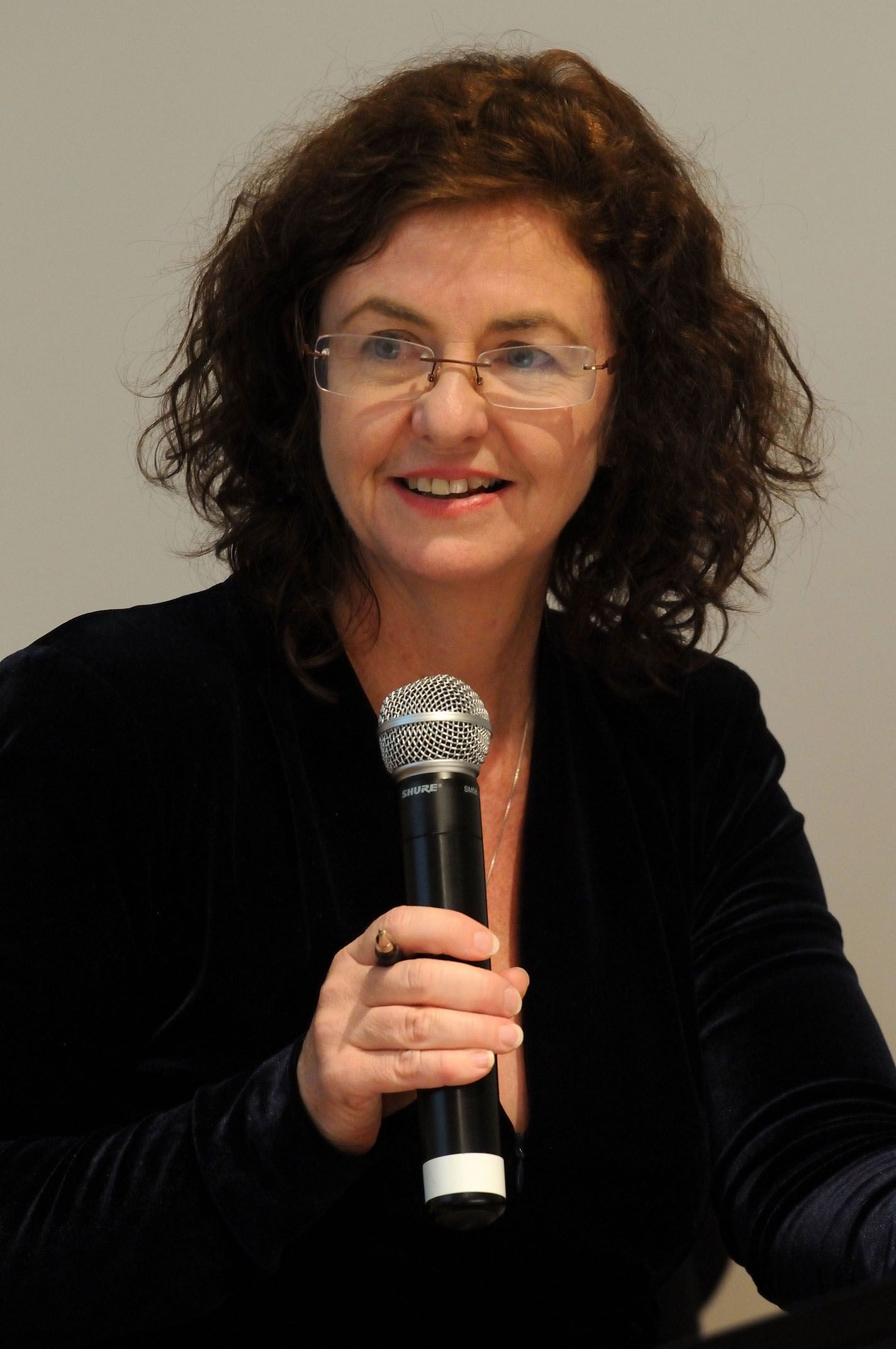
Madonna King is one of Australia’s most accomplished journalists, having national awards for her ABC Radio Brisbane Mornings current affairs program. She writes across Fairfax, Crikey, The New Daily and In Queensland, and is a regular contributor to the ABC’s The Drum. Madonna is the author of more than 10 books, including the best-selling Being 14, Fathers and Daughters, and Ten-Ager. She is the biographer of Australian of the Year and UQ Professor Ian Frazer and former treasurer Joe Hockey. In 2018, Madonna served as chair of the Queensland Government’s Anti-Cyberbullying Taskforce, set up in the wake of COAG. A fellow of the prestigious World Press Institute, she has served on the Walkley Advisory Board, and is currently deputy chair of St Leo’s College at UQ. She’s also a proud UQ alumnus.
